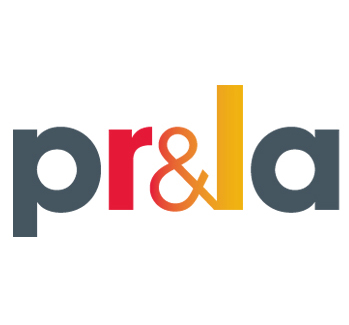What made you want to run for public office?
My father encouraged me to be involved in the political process shortly after I graduated from high school. At that time the voting age was 21. Following that encouragement, I participated in local politics and worked behind the scenes on many campaigns. I also served as Lycoming County chairman. I had numerous opportunities to run for office, but none really peaked my interest. Because I had practiced law for 30 years, when Sen. Madigan told me that he was retiring, I looked at the situation as a door opening and I had to make the choice of either stepping through that door or forgetting public service. I made the decision to run. I take the position very seriously and I will say that it has challenged every skill I developed as a lawyer.
If you could change anything with the way government is run, what would you change?
If I could change anything, I would reintroduce the concept of collegiality and compromise into all legislative bodies. Too many times we hear that “it is my way or the highway.” Republicans are not always right nor are Democrats always wrong or vice versa. There has never been the perfect piece of legislation introduced or enacted. Progress can certainly be made by less than perfect legislation. If a problem exists, we need to be willing to agree to start somewhere to address it and that takes respect and compromise.
What is the best way for constituents to communicate with you on legislative issues/concerns?
Constituents can contact me through virtually every electronic media whether email, Twitter, Facebook, fax, phone or mail. I am somewhat unusual in the Senate in that I personally read all of my email.
The theme of PRLA’s magazine this quarter is a focus on the opioid epidemic and the impact it has on society and the workplace. You have emerged as a key leader on the issue. What made this such a priority for you?
I first became involved in combatting the heroin/opioid epidemic over four years ago. I serve as chairman of the Center for Rural Pennsylvania, which is a bipartisan, bicameral legislative agency of the General Assembly. The charge of this agency is to address issues which affect rural Pennsylvania. Four years ago, I was asked whether I could use the Center for Rural Pennsylvania as a vehicle to raise the awareness of the heroin problem in rural Pennsylvania. We held a hearing in Williamsport because Lycoming County had a heroin task force and was a little ahead of the curve in addressing the problem. We knew, based on the response to the first hearing, that this was an issue of major importance to Pennsylvania as a whole.
Since the first hearing, we have held 12 others throughout the state. My website has 75 hours of presentations by experts in the epidemic ranging from addicts, law enforcement, health care workers, doctors, social workers, the state Chamber of Commerce, prison wardens and educators just to name a few. The CRP has also published two reports generated by the hearings which were the first comprehensive documents detailing the nature and scope of the heroin/opioid epidemic in Pennsylvania.
Typically, when a crisis like this rises to the surface, it impacts one part of the state more than the other. The opioid epidemic is uniformly a problem across the state—rural areas and cities. Why do you think that is?
What is different about the heroin/opioid epidemic in Pennsylvania, and the nation, is that it is the only drug problem we have ever faced which has a legitimate and legal feeder system which is our medical care system. From our hearings, we heard many times that 80 percent of those addicted to heroin began by abusing prescription drugs in some manner. That could be by over-prescription, theft, sharing or some other method, but nevertheless at the core is a prescription. Doctors are part of the problem, dispensers are part of the problem and, yes, government is part of the problem. Years ago, governmental policy was that Americans need not suffer any pain when drugs are available to relieve it. Even hospital reimbursement rates were calculated based on patients’ pain satisfaction levels. Of course, when we add the illegal drug trade to this mix, we have a perfect storm for an epidemic which takes 15 lives every day in Pennsylvania and 170 lives a day in the United States.
Despite the common knowledge that addiction is a disease, many people still do not seem to understand that it takes a multifaceted treatment plan (including medication) to treat it. How would you respond to those people?
We say that addiction is a disease. In the most part, however, we do not treat addiction as a disease. There are far too many people who look at drug addiction as a personal bad choice and, if the person overdoses, let them die. In the vast majority of cases, nothing could be farther from the truth. There is now significant research which indicates that opioids actually change the brain and once that change is made the person loses the capacity to make rational decisions. Many chastise people for “getting high” to feel good on drugs, but in reality, people are not taking drugs to feel good, they are taking drugs to stop from feeling bad, to prevent the gut wrenching pain associated with withdrawal.
Medication Assisted Treatment programs recognize that those of us who have a body structure which is susceptible to opioids, may need a maintenance level of drugs to function. Why is this any different than those in our population who must take insulin, because their bodies do not process sugars properly? If a person can be a contributing member of society by taking a maintenance level of an opioid, how does that differ from the person who must treat a diabetic condition every day?
Pennsylvania spends tens of millions of dollars on the drug epidemic in Pennsylvania every year. The focus of many of the programs is abstinence, that is, go through a treatment program and then abstain from using drugs forever. Would we, or do we use the same approach to the treatment of diabetes? Do we tell diabetics or those with high blood pressure, just go through this program and then stop using your medications? Of course, we don’t do that. So, if we are serious about the “disease” of addiction, we must take a serious look at reconfiguring our treatment programs and, especially, medication assisted treatment.
What are some of your goals to solve this problem?
I have been asked many times, if we just pass a particular law, will that solve the heroin problem in Pennsylvania. The answer is that there is no one solution to the heroin/opioid epidemic in Pennsylvania. Combating the problem is a community-wide, state-wide, all-hands-on deck problem. We have addressed several major issues legislatively over the last four years. We have enacted legislation directed toward making the antidote naloxone more available, we have limited opioid prescriptions coming from emergency rooms, we have limited the prescription of opioids to minors, we have implemented a Prescription Drug Monitoring Program to prevent doctor shopping, we have enacted legislation making pain management a part of continuing medical education and we have placed inspection requirements on recovery houses. I analogize these efforts to making a rope. Each of these laws is a strand in the rope of recovery from this epidemic. I will be happy if we can make a dent in this epidemic in 10 years. •
Senator Gene Yaw
(R, Bradford, Lycoming, Sullivan, Susquehanna (part) and Union counties)













